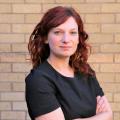
ONE of the world’s biggest news agencies has insisted Kensington Palace is no longer a trusted source after a fallout over a doctored image of Kate Middleton.
The Princess of Wales was pictured with her three children in an image released on Mother’s Day (below) but it was quickly pulled by several agencies over concerns it had been manipulated.

Despite an eventual apology from the princess in which she implied she had edited the image herself, AFP’s global news director Phil Chetwynd has now said the organisation does not consider Kensington Palace to be a trusted source.
He said it was rare for agencies to “kill” an image, adding that previous situations have involved the North Korean news agency or Iranian news agency.
He told BBC Radio 4 that the AFP has reviewed its relationship with the Prince and Princess of Wales and would rigorously inspect future picture handouts.
Asked by Ros Atkins if Kensington Palace is a trusted source, Chetwynd said: “No, absolutely not.
“Like with anything, when you’re let down by a source the bar is raised.
“We sent out notes to all our teams at the moment to be absolutely super more vigilant about the content coming across our desk — even from what we would call trusted sources.”
AFP is one of the biggest news agencies. I asked its Global News Director, Phil Chetwynd, if AFP would consider Kensington Palace a trusted source, after the edited photo of the Princess of Wales & her children. 'Absolutely not' was the reply. Here's the exchange on @BBCRadio4. pic.twitter.com/yifhSode1p
— Ros Atkins (@BBCRosAtkins) March 14, 2024
Kensington Palace has declined to publish the original unedited photo, which was purportedly taken by William this year.
Chetwynd revealed that news agencies, including Associated Press and Reuters spoke before issuing notices to “kill” the picture on Sunday.
READ MORE: 'Ridiculous' Kate Middleton photo apology gives public 'no answers'
He added: “To kill something on the basis of manipulation [is rare. We do it] once a year maybe, I hope less. The previous kills we’ve had have been from the North Korean news agency or the Iranian news agency.
“One thing that’s really important is you cannot be distorting reality for the public. There’s a question of trust. And the big issue here is one of trust, and the lack of trust and the falling trust of the general public in institutions generally and in the media.
“And so it’s extremely important that a photo does represent broadly the reality that it’s seen in.”




Why are you making commenting on The National only available to subscribers?
We know there are thousands of National readers who want to debate, argue and go back and forth in the comments section of our stories. We’ve got the most informed readers in Scotland, asking each other the big questions about the future of our country.
Unfortunately, though, these important debates are being spoiled by a vocal minority of trolls who aren’t really interested in the issues, try to derail the conversations, register under fake names, and post vile abuse.
So that’s why we’ve decided to make the ability to comment only available to our paying subscribers. That way, all the trolls who post abuse on our website will have to pay if they want to join the debate – and risk a permanent ban from the account that they subscribe with.
The conversation will go back to what it should be about – people who care passionately about the issues, but disagree constructively on what we should do about them. Let’s get that debate started!
Callum Baird, Editor of The National
Comments: Our rules
We want our comments to be a lively and valuable part of our community - a place where readers can debate and engage with the most important local issues. The ability to comment on our stories is a privilege, not a right, however, and that privilege may be withdrawn if it is abused or misused.
Please report any comments that break our rules.
Read the rules hereLast Updated:
Report this comment Cancel